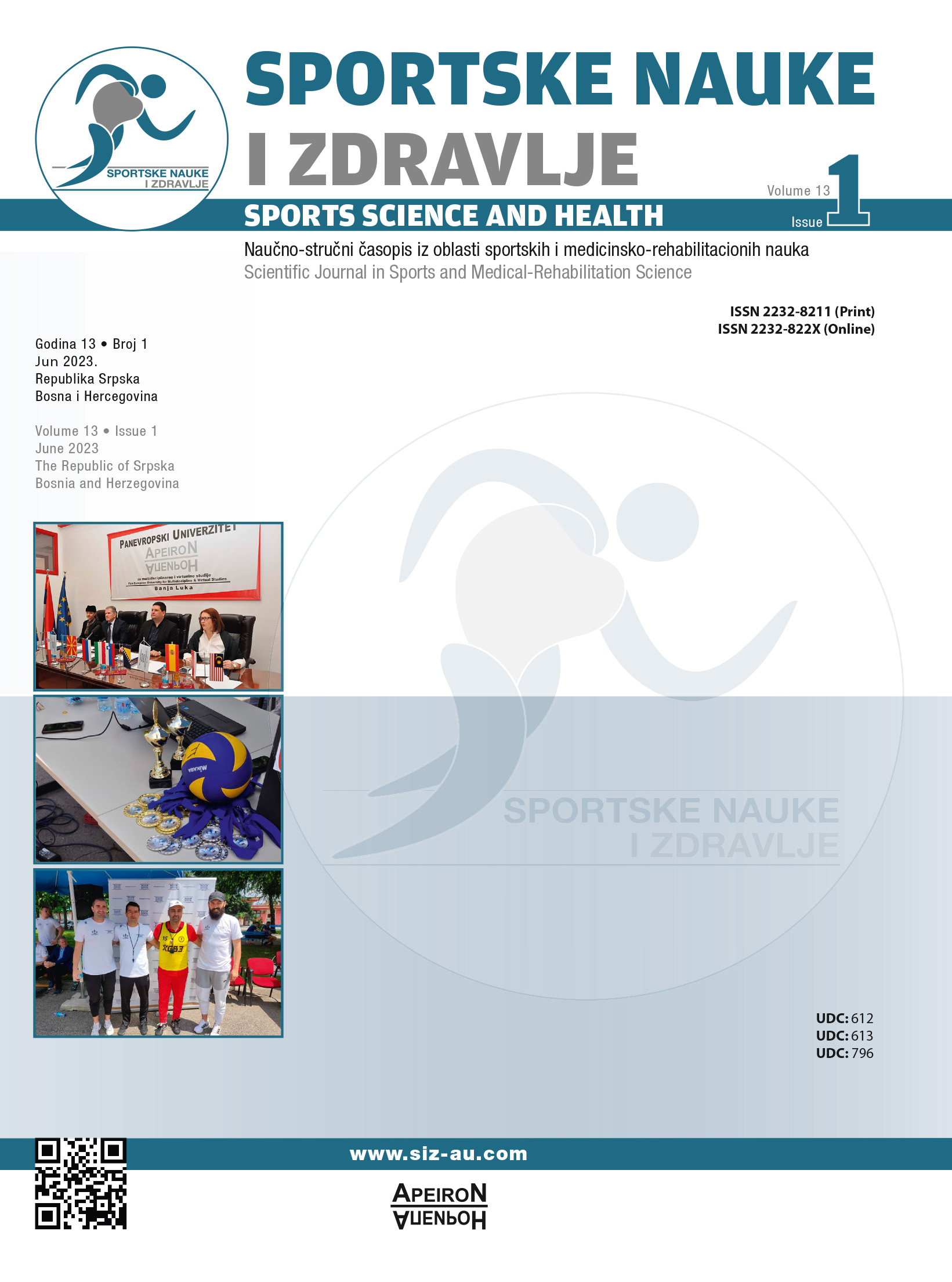The Effects of a Six-Week Preparatory Period on the Transformation of Speed and Agility Ability in Senior Female Soccer Players
DOI:
https://doi.org/10.7251/SSH2301011SAbstract
The aim of this research was to determine the effects of a six-week preparatory period on the development of speed and agility in female soccer players of “Emina” Women’s Soccer Team of Mostar (n=18), who competed in the Premier League of Bosnia and Herzegovina in the season 2021/22. In the research, variables were applied to determine the basic characteristics of female soccer players: Age (years), Height (cm), Mass (kg), BMI (kg/m2), to assess speed ability: Sprint 5m (s), 10m (s), 20m (s) and agility: 10x5 m test (s), Zig-Zag test (s) and 505 test (s). The average age of female soccer players was 21.27 ± 4.57 years, average height 167.2 cm ± 5.82 cm and average weight 60.4 kg ± 7.36 kg. The dependent samples T-test was run to determine the statistical significance of the differences in arithmetic means between the initial and final measurements. The reported results of the T-test showed that after the six-week preparatory period, the test subjects had a lower mass (t=3.027; df=17; sig.= 0.008; p≤ 0.05) and BMI (t=2.253; df=17; sig.= 0.038; p≤ 0.05). Statistically significant differences at the level of p≤ 0.05, after the program had been completed, were reported for the agility tests 10x5m (t=3.125; df=17; sig.=0.006) and 505 test (t=3.028; df=17; sig.= 0.008). In other variables, positive changes were reported, but they were not statistically significant at the p≤ 0.05 level. We concluded that the six-week preparatory period program produced statistically significant changes in the area of agility and that the training should focus more on improving speed and speed endurance in the given sample of female football players.
